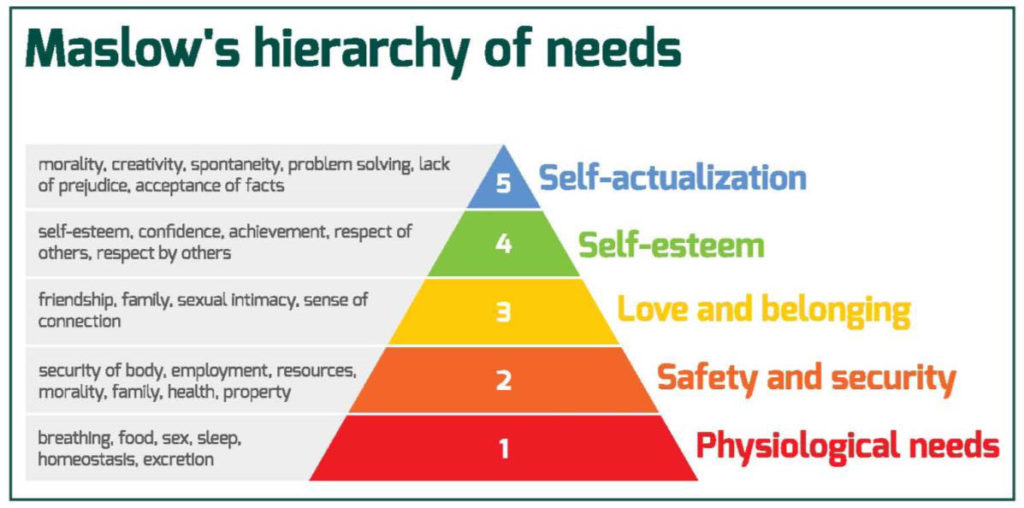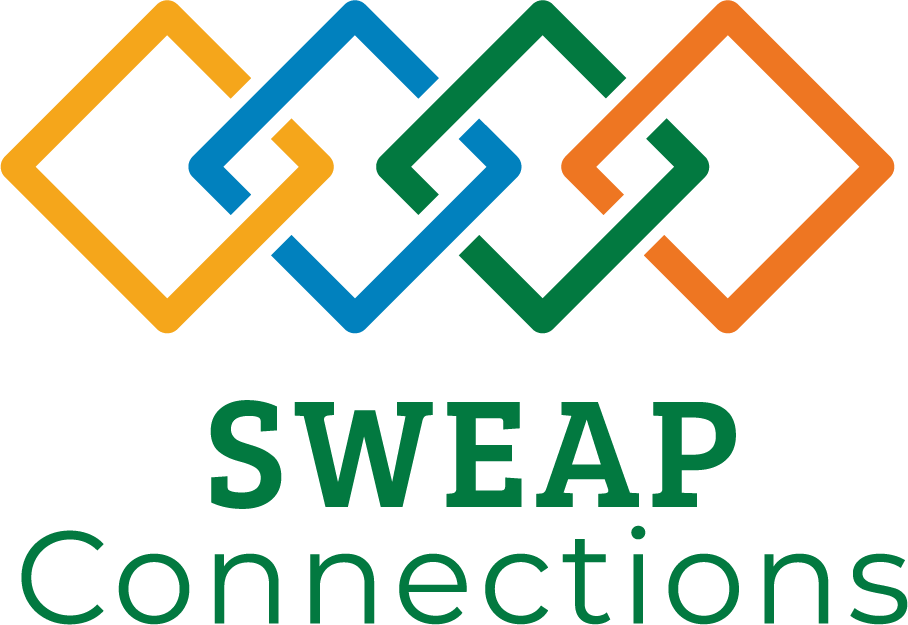As we emerge from an unprecedented time of transition into continued transition and uncertainty, we can look for some different reactions in ourselves and others related to the area of need that was most affected by the pandemic. We have all been disrupted and are now having to restabilize in an unstable time.
As managers and supervisors, what should you expect in your employees? How can you help employees successfully deal with pandemic-related stress and anxiety? Maslow’s Hierarchy of Needs is often used as a model to describe human motivation. For example, a person having trouble finding food or shelter will not be concerned with self-esteem until these more foundational needs are met. As employees, managers and organizations continue to transition through the pandemic, Maslow’s Hierarchy of Needs provides a useful model for discussing the stress and anxiety employees feel, and it can assist you as supervisors and managers to help your teams. Setbacks and difficult situations in life can keep us stuck at one level on Maslow’s model, or move us backwards. Discussing each stage can be an effective model for helping employees.
1. Physiological Needs
We know many disruptions occurred in basic service delivery and functionality. Disruptions to food, shelter and sleep will continuously affect all other areas until they are reconciled. You likely know employees who struggled with housing and food insecurity during this pandemic. If they are still working on stabilizing those areas it will be difficult for them to focus and they are more likely to be irritable, sad or anxious. You can help them by knowing your organization’s and local community’s options for assistance.
Everyone experienced sleep disruption, and it will continue to be difficult to regulate sleep, as things still are not “normal.” Connect and promote resources for sleep hygiene like progressive muscle relaxation or virtual yoga classes.
2. Safety Needs
Everyone experienced fear for their own health and the health of their family. Everyone. There was a legitimate reason for that fear, and it is not over. Try to only promote accurate, understandable information, and maintain calmness and transparency when updating employees on safety practices and new information. Retrain staff on new and old policies as your workforce comes back on site. Review safety protocols, and be clear that you expect your supervisors to maintain these policies, especially when it comes to COVID safety like masks and sanitizing. If the company leadership and supervisors are ambivalent that burden is passed on to employees, who may feel anxiety if they want to “enforce” the policy with no authority.
Changes in employment and resources were felt throughout the state. Many employees walked away with not only fear, but frustration and sadness. Even if they understood reasons for staff reductions, furloughs or schedule changes, it is hard to separate fear and frustration from one of its sources. It is a lot easier to be mad at an organization than a disease. Remind employees they are valued, appreciated and were missed, and be prepared to hear some reasonably unreasonable complaints.

3. Love and Belonging
Each of us likely turned to family and friends for support and reassurance during this strange time.
Hopefully, your employees did as well. Even with the availability of digital connectedness, we have been unable to express ourselves, bond and spend time together in the ways we know. We may still be feeling residual sadness and disappointment with our relationships. The daily, even small human connections we have in the workplace can have a positive impact on physical health, mental health and even longevity. Discuss the many new ways people stayed connected and supported each other. Provide safe suggestions for how people can begin to reconnect. Try some icebreakers or informal discussions as people reenter routines. It could help shake off the dust and perhaps break some bad temporary habits we picked up at home.
4. Esteem
As the crisis stage that people have been living in wears off, you should expect to see more anxiety, worry and difficulty managing change and responding to stress. That may sound counterintuitive, but because of the difficulty of the last year, a lot of people have been living in a “make it work,” semi-crisis state of alertness. As some normalcy returns, and what used to be our typical stressors resurface, we may experience more spikes of anxiety. Discuss the difficulty of this transition and the ways we can support ourselves and others. Encourage work-life balance and stress management, and connect employees with resources like SWEAP Connections or other benefits that support employees. Each employee has experienced the challenges of the past year differently. Prepare to deal with employee frustration and some interpersonal workplace conflict. There has been much worry and confusion in the air, and that can lead to frustration and conflict. Employees want clarity, flexibility and recognition more than ever before to help them feel more settled. The more you can show appreciation and grace as employees reestablish their productive routines, the more you can coach them through getting back in the swing of things. Offer information on deep breathing, mindfulness and other skills for managing in-the-moment stressors.
5. Self-actualization
Motivation has been consistently raised as a concern by our clients over the last nine months. When everyone was essentially required to pause large parts of life, those ambitions were put on ice. It may take a moment to defrost those drives and reconnect to what we are working toward. For employees, it can be helpful to reconnect to the mission of the organization and reestablish professional goals—not just work deadlines, but professional development goals. This is an opportunity for leadership to give recognition to employees and highlight processes and desired behaviors that directly serve the organization’s overall mission and goals.
Managers and Supervisors Are In A Prime Position To Help
Overall, it is important to remember the importance of mental health and stress management amid these changes. Provide skills building and in-the-moment tools for managing stress and handling conflict. Intentional effort toward improving employee mental health pays off in the long run, with retention, loyalty and long-term productivity.
What you can do right now:
- Connect employees with SWEAP Connections resources.
- Be empathetic to your employees’ needs, connect them with help.
- Provide easy-to-digest, tangible information that employees can use today.
- Review your organization’s policies for accuracy in today’s world to cut down on confusion.
- Take care of yourself and encourage those around you to do the same.
— Originally appeared in Arkansas Municipal League’s monthly City & Town publication
Allison Atkinson, LCSW, CEAP, is the director of organizational development at SWEAP Connections.

